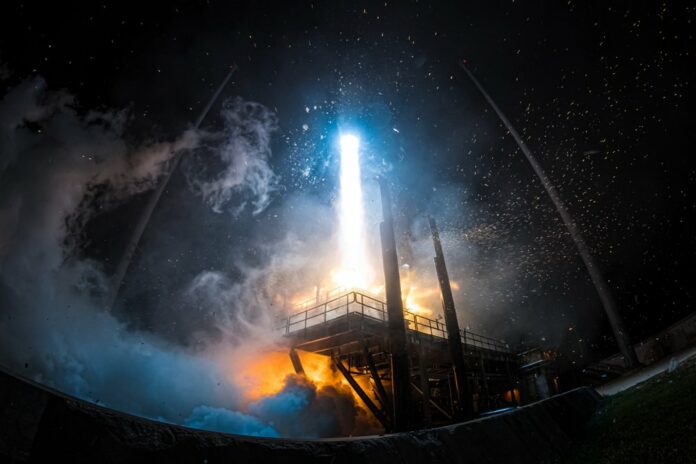A couple of days ago, the whole AM aerospace and space industries joined Relativity Space in a milestone that we should forever cherish: the successful launch of its 3D printed Terran 1 rocket. As promised, the space company has provided further information about this launch and it turns out there are a number of twists we didn’t see coming – the first one being the demise of this flagship Terran 1 rocket.
No, we didn’t forget that the rocket failed to reach its target orbit but it did prove that 3D printed rockets are ‘structurally viable’ to do so.
The rocket, 85% 3D printed by mass, crossed the 100km Karman line and passed the highest loading conditions at Max-Q. Although the anomaly it encountered at Stage 2 means the engine did not meet full thrust.
Despite these milestones, Relativity wants to take the learnings, and momentum gathered through its Terran 1 program to focus on Terran R, its reusable, 3D printed, medium-to-heavy lift orbital launch vehicle.
Why?
For the company’s co-founder and CEO, Tim Ellis, their first chapter as a company was to prove to the world’s 3D printed rockets were viable. “We just did that with Terran 1. Our second chapter is to build the next great launch company with Terran R. Terran R is the most customer-centric next generation launch vehicle. It is not a conventional rocket. This is a new breed of launch vehicle with the right payload performance, reliability, focus on speed of development, optimized reusability, focus on scalability of launch ramp rate, and ultimately cost reduction baked into the architecture design and our program plans from day one. Terran 1 was like a concept car, redefining the boundaries of what is possible by developing many valuable brand-new technologies well ahead of their time. Terran R is the mass-market, huge demand product that will be amazing precisely because it brings those ‘concept car’ developments into full maturity, enabling Relativity to become a disruptive, diversified provider in solving the glaring medium-to-heavy lift launch market gap for customers with a new vehicle faster than previously possible”, he adds.
What should you know about Terran R?
As a two-stage, 270-foot-tall rocket with an 18-foot diameter and a 5-meter payload fairing, Terran R is a customer-centric next generation launch vehicle designed to meet the needs of commercial companies and government entities sending payloads into LEO, MEO, GEO, and beyond.
Terran R will prioritize first stage reusability, with the capability of launching 23,500kg to Low Earth Orbit (LEO) or 5,500kg to a Geosynchronous Transfer Orbit (GTO), both with downrange landing, or up to a maximum payload of 33,500kg to LEO in expendable configuration. Horizontal integration to the vehicle will be supported through a standard Payload Attach Fitting (PAF) interface, with payload integration configurations available for clusters of constellation satellites, single large satellites, or other unique spacecraft. Starting in 2026, Terran R will launch from Space Launch Complex 16, the company’s orbital launch site at Cape Canaveral, Florida.
From a manufacturing standpoint, the 3D printed rocket – designed for rapid reusability and development iteration speed – is built using aluminum alloy tank straight-section barrels in a hybrid manufacturing approach.
Each Terran R requires approximately 6 times more 3D printing by mass than Terran 1. 3D printing technology for Terran R is strategically used to reduce vehicle complexity and improve manufacturability, with continued company focus on redefining what is possible with large scale additive manufacturing after successfully proving the viability of 3D printed rockets with Terran 1. Initially, Terran R will use the same proprietary printed aluminum alloy as flown on Terran 1 with a focus on supply chain scaling. However, a third-generation aluminum alloy, designed for improved performance of an orbital vehicle mission life beyond 20 reusable flights, is in active development, which is accelerated by the aid of artificial intelligence-based alloy discovery tools.
Terran R’s first stage will be outfitted with 13 3D-printed gas generator cycle Aeon R LOx/Methane rocket engines each capable of 258,000 lb. sea level thrust, while its second stage houses a single LOx/Methane Aeon Vac engine with 279,000 lb. vacuum thrust.
Terran R’s 3D printed Aeon R engines are designed to use liquid oxygen and liquid methane propellants, be highly reusable, and feature a uniquely high-pressure gas generator cycle driving two turbopumps.
In February 2023, the company completed its first full build of an Aeon R engine, and turbopump testing will begin in the coming months ahead of full engine testing this year.
Remember, you can post free of charge job opportunities in the AM Industry on 3D ADEPT Media or look for a job via our job board. Make sure to follow us on our social networks and subscribe to our weekly newsletter : Facebook, Twitter, LinkedIn & Instagram ! If you want to be featured in the next issue of our digital magazine or if you hear a story that needs to be heard, make sure to send it to contact@3dadept.com.






